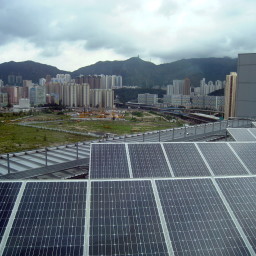The question of angle of solar panels comes up in about every serious discussion of PV installations.
We recently had a chance to photograph two different arrays on the same day at the same time. It gives a great comparison:


The top array is basically at full power, the bottom is at zero.
But as with any design question, there is more to consider:
1. What additional cost might be involved to increase a tilt angle from 23 degrees, (a typical 5/12 pitch roof) to 40 degrees?
2. How often does this condition actually exist in use?
3. What is the optimum angle for yearly power generation?
When I designed our system I looked at the cost of fancy racking to lift the panels to 40 degrees, It was quite significant. Additionally there are maintenance costs that come with a more sophisticated arrangement.
Our Michigan weather conditions don’t produce this condition very often so in terms of actual power lost I probably estimated less than $100 worth of energy a year.
Finally the 23 degree angle of our roof is somewhat short of the optimum yearly location, so I would be generating less power by about 10%.
However, with the above in mind I determined I would be better off using the money I would have spent for a fancier racking system to buy and install more solar panels at the 23 degrees. That way I would receive benefit from that investment on the vast majority of the days the system is in use, even if i sacrificed generation when the system is snow covered.
 Mail this post
Mail this post

